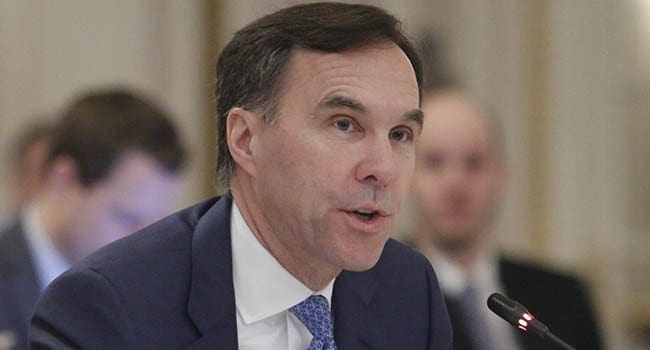By Jason Clemens,
Jake Fuss
and Tegan Hill
The Fraser Institute
Finance Minister Bill Morneau recently confirmed the federal government’s intention to reduce personal income taxes for everyone except “higher-income earners.”

Jason
Clemens
With total taxes (federal, provincial and local) consuming 44.7 percent of the average family’s income in 2019, it’s easy to see why Canadians want tax relief. The problem is the type of tax cuts announced, along with how they’re being financed.
Morneau announced that the amount of income that workers can earn before paying income taxes – the basic personal amount – will gradually increase from a little more than $12,000 to $15,000 over four years, with a total cost to government revenues of roughly $3.0 billion in 2020 rising to $6.2 billion in 2024.
This tax relief will be phased out for workers with “higher earnings,” specifically those making more than roughly $150,000.

Jake Fuss
Increasing the basic exemption will not change the personal income tax rates imposed on workers, entrepreneurs and investors. As the Liberal government under Paul Martin recognized in 2004, Canada must lower personal income tax rates to increase “incentives for Canadians to learn, work, save and invest.”
Lowering personal income tax rates means Canadians retain more of the benefits (income) when they work an extra hour, invest in their education, start a business, or save and invest – all things the country needs more of to prosper.
And yet the tax cuts announced, though intended to improve the economy, do nothing to improve the very incentives needed to spur economic growth.

Tegan Hill
A 2019 study reconfirmed then-prime minister Martin’s concerns about Canada’s personal income tax rates being uncompetitive. Nine of the Canadian provinces are in the top 10 jurisdictions in North America in terms of the highest personal income tax rates (combined federal and provincial/state) for professionals and entrepreneurs. Indeed, 49 U.S. states have combined personal income tax rates that are lower than all the provinces.
In 2017, the most recent year of available data, Canada’s top combined personal income tax rate was the seventh highest among the 34 industrialized countries of the Organization for Economic Co-operation and Development (OECD).
In addition to making the wrong type of tax cut, the federal government is running large and increasing deficits. In the historic 2000 budget, Martin emphatically stated that “tax reductions should not be financed with borrowed money.”
Because the current Liberal government is not reducing spending, such “tax cuts” are not cuts at all but rather deferrals to future taxpayers.
This government is not, as it did in the mid-1990s, spending less and therefore lowering tax rates. Instead, it plans to spend more today (and in the future) while lowering tax rates. The result: increasing deficits (borrowing) today to finance spending and tax cuts. This is one of the main reasons the federal Department of Finance doesn’t expect the government to balance its budget until at least 2040.
The combination of more spending – already at an unprecedented level – and tax relief is all the more irresponsible given the increasing signs, including the recent dismal jobs report by Statistic Canada, that the economy is slowing, if not entering a recession.
An economic slowdown or recession will cause a marked deterioration in federal finances, which will likely takes years for the federal government to work out.
Smart tax cuts that improve the incentives for workers, entrepreneurs and investors, along with a balanced budget is what’s needed now.
Jason Clemens, Jake Fuss and Tegan Hill are economists with the Fraser Institute.
Jason, Jake and Tegan are Troy Media contributors. Why aren’t you?
The views, opinions and positions expressed by columnists and contributors are the author’s alone. They do not inherently or expressly reflect the views, opinions and/or positions of our publication.


